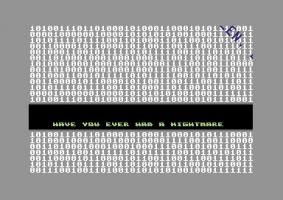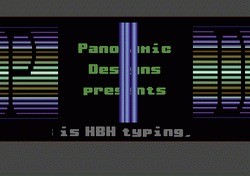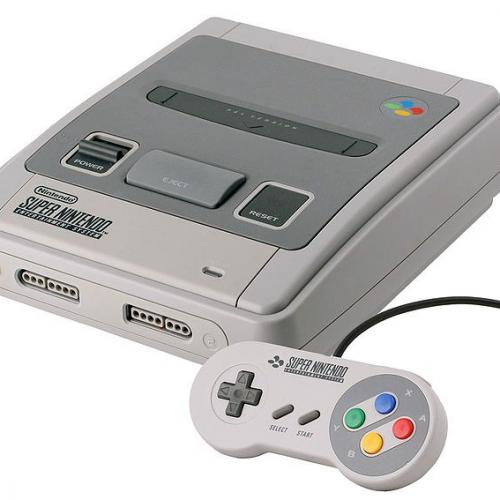Copy Link
Add to Bookmark
Report
HBH 05

##########
### ###
### ### #### ## ## ## ######
### ### ## ## ## ## ##
### ### #### ## ## ## ####
### ### ## ## ## ## ## ##
### ### ##### ### ## #######
## ##### #### #### ##### ####
## ## # # ## ## ##
## ##### # # #### ## ##
## ## # # ## ## ##
##### ###### # # ###### ## ##
/==========================================\
| CONTENTS: |
|==========================================|
|Introduction -----------------------ynori7|
|News -----------------------------Futility|
|Intro to Calculus ------------------ynori7|
|Memory in C/C++ and Similar Languages --MW|
|Computers that Failed ---------------fuser|
|Bypass CPAlead survey script ------p4plus2|
|Futility Rant --------------------Futility|
\==========================================/
==============================================================
====================Introduction by ynori7====================
==============================================================
Greetings HBH. It's time for Newsletter #5! We've got some interesting
new material including a code snippet from a guest writer, p4plus2.
We also have an article by a mystery writer (abbreviated as MW) because
the author wished to remain anonymous. Remember, you don't need to be
part of the newsletter staff to submit an article, so if you've got an
idea for something that you think the people of HBH might learn from or
be interested in, don't hesitate to send it to me.
There will be a thread for comments and suggestions shortly. Criticisms
are welcome, so don't feel afraid to voice your opinions. And now,
without further ado, I give you Newsletter #5.
~ynori7
==============================================================
=======================News by Futility=======================
==============================================================
Change at HellboundHackers has been sparse lately, and we can only assume
this is because our unflinching leaders have been working diligently
behind the scenes to provide us with something outstanding. But, until
the time of that unveiling, we must keep ourselves entertained in other
ways. Ways such as site-wide competitions.
As mentioned in our previous newsletter, korg has been spearheading a ploy
to get new products for HBH featuring user-submitted graphics. Well the
time has come (and past) for the best of these graphics to be voted for by
you, the people, and both DOSed and tbaybucs have been deemed the winners.
Their designs are posted in the official thread and are awaiting a
cheese-flavored stamp of approval before they can be formally put on
products for all of us to enjoy. Good work, you guys.
A second competition that has taken place is a more technical one. It was
pitched, produced, and phinalized by ynori7 and involved minimizing the
time it took for a Python script to complete its mission. Both scripting
and programming have been under-represented on HBH in the past, and it's
competitions such as this one that will help draw activity back. After
extensive testing of each and every script sent in, stdio, otani, and
just a panda were proudly announced as the winners. Check the official
thread, located in 'Programming Competitions', for an in-depth view of
their scripts. This means that you, too, can learn how to accomplish such
wonders.
Well, that's pretty much all there is to write about. Hopefully next time
we'll be looking at some major improvements to the site and drastic
increases in both the amount of competition entries and traffic.
==============================================================
=================Intro to Calculus by ynori7==================
==============================================================
This article is geared towards the practical application of calculus
rather than the theoretical aspect. I wont be deriving the equations
that are used here and I wont be showing all the theory behind
everything, but Ill give a list of things to look up if you want to know
more about where these concepts come from. Also, Ive noted that in many
other countries the terminology is different from what Ill be using, so
dont be outraged if I say derivative instead of differential or something
else.
------Basic Derivatives------
This is really the backbone of calculus. Everything else in this article
will be based off of this concept. If you want to know where the concept
of derivatives comes from then look up limits and tangent lines.
Basically, the derivative of a function is the rate of change of one
variable with relation to another (usually change in y with relation to
x). This is notated in a few ways; the two most common are: f(x), which
is the derivative of f(x) and dy/dx, which notates the derivative of a
function as well (d representing the Greek letter delta which is often
used to represent change. dy/dx is the change in y with respect to the
change in x).
The definition of the slope of a two dimensional function, y=f(x), is the
change in y with respect to x (often said as rise over run). Up until
calculus you could only approximate the slope of nonlinear functions at
certain points. The following is a very basic formula for taking a
derivative of a polynomial.
Given that f(x)=ax^b,
The derivative is f(x)=abx^(b-1).
A very simple example for this is f(x)=x^2. The derivative is f(x)=2x.
Also, you should note that the derivative of an integer (i.e.
non-variable) is zero (i.e. f(x) =2, f(x) =0). This is because a constant
such as two is actually 2x^0 (since anything to the power of zero equals
one), and the derivative of that is 0*2x^-1. And when dealing with an
equation of this form (i.e. f( x )=ax^b+cx^d+
.), you take the derivative
of each term (e.g. f(x)=x^2 + x^3; f(x)=2x+3x^2).
Perhaps you who havent learned this yet are skeptical about the idea that
you can find a slope of a curve this way. Lets use a simple example that
you can confirm with your current knowledge, a linear equation.
Lets say we have the equation y=2x+2. That equation is in the form y=mx+b
where m is the slope and b is the y-intercept, therefore the slope equals
two. Now lets compare to the derivative: y=2x+2; y=2x^0+0*2x^-1=2.
Derivatives can be used for many different practices including geometry,
physics, statistics, accounting, and many more. They can even be applied
to everyday life. With what we have just learned, we can solve a simple
but useful practical application problem. Lets say you have a plot of
land bordering a river, and you want to put a fence around it (you dont
need to put fencing along the river side). You have enough material to
lay 1000 meters of fence. What should the dimensions be if you want to
enclose the maximum area with the materials you have?
Heres how you can use calculus to solve it:
Youll end up making two equations (one for perimeter and one for area).
First, we need to work with the perimeter equation.
X+2y=1000 (We only need to cover three sides since the river covers the
fourth)
You then need to solve that equation for y.
Y=500 x/2
Now we make our area equation.
A=x*y
We need the problem to be written with only one independent variable to
solve it, so take the result from our perimeter equation and substitute y
for 500-x/2.
A=x(500-x/2)=500x (x^2)/2
In order to find the maximum area, we need to find the maximum point on
the area curve. In this instance, that will be when the slope of the curve
(i.e. the derivative) is equal to zero. Since this is a quadratic equation
there will be exactly one maximum or minimum (maximum in this case since
the term with the exponent is negative).
dA/dx=500 x
Now we set dA/dx to zero and we have: 0=500-x
And therefore x=500. Now just plug that value back into the original
perimeter equation and solve for y:
500+2y=1000; 2y=500; y=250
-------More Complex Derivatives------
The derivatives weve worked with so far have been fairly easy to
calculate, but what do you do if you have a function like this:
f(x) = (3x+1)(4x-1)
You could easily expand that into a nice polynomial, but what if your
function is much more complex and you cant? There are a few simple
procedures you can use to take derivatives of these types of functions:
Product Rule, Quotient Rule, and the Chain Rule.
~~Product Rule: ~~
Given an equation of the form y=f(x)*g(x), you can find the derivative of
y using the following formula.
y = f(x)*g(x) + f(x)*g(x)
So lets use our example from above, f(x) = (3x+1)(4x-1)
f(x) = (3x+1)*(4) + (3)*(4x-1) = (12x+4)+(12x-3) = 24x+1
Lets expand the original f(x) and take the derivative so you can all see
that it comes to the same answer. f(x) = (3x+1)(4x-1) = 12x^2 + x -1
f(x)= 24x+1
~~Quotient Rule:~~
Now lets say our equation is f(x) = (3x+1)/(4x-1). We need to use the
quotient rule to solve this.
Given an equation of the form y=f(x)/g(x), you can find the derivative of
y using the following formula.
y = ( f(x)*g(x) - f(x)*g(x) ) / (g(x))^2
In words: The denominator multiplied by the derivative of the numerator
minus the numerator multiplied by the derivative of the denominator, all
divided by the denominator squared.
Using our example from above, f(x) = (3x+1)/(4x-1), lets apply the
quotient rule.
f(x) = ( (3)*(4x-1) (3x+1)(4) ) / (4x-1)^2
= ((12x-3) (12x+4)) / (16x^2-8x+1)
=(-7)/(16x^2 8x + 1)
~~Chain Rule:~~
Now, lets say you have the equation y = (4x-1)^2. We could expand that
and take the derivative of the polynomial, but what if we have an exponent
much larger than two? The most effective way to solve the problem is the
chain rule. Here is the general formula for the chain rule.
If y = f( g(x) ), then y is given by:
y = g(x) * f( g(x) )
Lets try applying that to y = (4x-1)^2.
The easiest way to go about this now is to replace g(x) with a variable so
it looks less confusing. So lets write it as: y = u^2 where u=4x-1.
y = u*2u
Now, replace u with (4x-1) and u with (4) and you have your answer.
y = (4)*2(4x-1) = 32x-8
We can check this answer since we know that (4x-1)^2=16x^2-8x+1, and the
derivative of that is 32x-8.
-------------------------------
Heres another example to show how calculus can be useful involving Taylor
Series. For this example Ill introduce another derivative formula. The
derivative of the natural logarithm is:
f(x)=C*ln(g(x)) where C is some constant and g(x) is a function of x.
f(x)=(C*g(x)) / g(x)
So, the derivative of y=ln(x) is y=1/x.
The Taylor Series is a way to represent complex functions as an infinite
series of polynomials. This can be useful in numerical computing when you
need to perform many operations on a very ugly equation. The Taylor
Series also becomes useful for approximating integrals in higher level
calculus. Here is the formula for finding the Taylor approximation of a
function:
https://www.hellboundhackers.org/newsletter/5/images/taylor.jpg
For those of you already familiar with the Taylor polynomial, note that
this particular form is called the Maclaurian Series which is centered
about zero.
Also, note that f(x) is the second derivative of f(x) which is just the
derivative of f(x).
Now lets say you have an ugly function like f(x)= ln(x^2+1)+4x+2 and you
want to turn it into a polynomial. Lets find the Taylor approximation
with two terms (note that using more terms yields a function that is a
more accurate approximation).
To solve we need to find all of the pieces needed for the polynomial:
We can easily plug in zero for x and find that f(0)=2.
Now to find f(0):
f(x)=ln(u)+4x+1
u=x^2+1
u=2x
f(x)=2x/(x^2+1)+4
f(0)=4
So our new polynomial is (note that its not a terribly accurate
approximation because we only used two terms):
f(x)=2+4x
-------------------------------
For those of you interested in learning more about derivatives, you can
easily find the formulas online for differentiating other functions such
as logarithms, trigonometric functions, hyperbolic functions, etc. If you
readers find this article interesting and want to see more, let me know
and I can cover the topic of calculus further. Calculus is a vast subject
and the basic derivative is only the tip of the ice berg. The next major
topic in calculus is integrals (related terms: primitive function,
anti-derivative, definite/indefinite integral).
==============================================================
========Memory in C/C++ and Similar Languages by MW===========
==============================================================
One of the most important things when programming can be managing memory.
In some languages that have automatic garbage collection, such as Java,
this isn't as important an aspect as in lower level ones where you have to
do it yourself. Many programmers who change languages, or starting
programmers who aren't familiar with these things as it hasn't been
necessary for them, make mistakes with memory. These mistakes can lead to
many things of course, such as overwriting information you didn't mean to,
trying to free free space, freeing space you never meant to free, but what
I'm going to write about are memory leaks.
Memory leaks exist in most large programs, which isn't surprising because
it's a type of error that doesn't generate an error nor a warning at
compile time (unless you've got a very thorough compiler). However, before
I explain what exactly memory leaks are, I'll explain the two major parts
of memory that a program has to deal with. The first one is called the
stack, which is memory of fixed size where the program exists. The other
one is called the heap, this is basically the memory that isn't allocated
for the stack. Your program can throw whatever it wants on the heap for
storage, as long as there's room for it, and this is what's used for
dynamic memory allocation. This is very handy when we need to allocate
memory of unknown or varying size, however, this is where the problem of
memory leaks arise.
When we throw something on the heap, we need something that tells us where
on the heap we can find it, something that points to it, a pointer for
instance. When the key (the pointer) to finding the allocated memory is
lost, that's when a memory leak is created. A memory leak is thus
basically just information that isn't being used and we have no access to
that's still hogging space. Might not sound like a major deal, especially
as it'll be freed once the program ends, but it still makes for an
inefficient program and in large applications, many small memory leaks
will lead to a lot of lost space. To prevent this, all you have to do is
free whatever memory you allocated once you don't need it anymore for
whatever was stored there. People new to handling dynamic memory make many
mistakes when it comes to this and I'm going to go through a couple of the
most common ones.
The most obvious one relates directly to losing a pointer which is when a
variable holding a pointer is overwritten, this hardly warrants mention,
but if you're assigning a pointer to an already existing variable, make
sure to take care of whatever memory it was previously pointing to.
There are, of course, other times where it isn't as easy to notice. For
instance, there's something in regards to the stack that is called a stack
frame. This is the instance you're in at the moment; the main part, a
loop, a function, etc. they all have their own stack frame. When you call
on a function or you go into a loop, you go into their stack frame and at
the end of it you will fall back to whichever one you came from. When this
happens, all the information you declared inside that stack frame will be
cleared. One would think that this would mean that one does not have to
worry about clearing up memory as it will be automatically handled when
the loop, function, etc. ends. However, this is not the case and it
actually increases the risk of a memory leak happening. The reason for
this is because it doesn't exactly clear memory when it leaves the frame.
Since it's on the stack, it means that it's of fixed size, so you never
free it. What happens is that the same storage will be reused the next
time it is called, just the same as the first time it was called. This is
irrelevant to the heap and means that if you dynamically allocate memory
to a variable declared inside a loop, function or any other stack frame
and do not return the address upon exit, the address will be "cleared",
but the memory allocated on the heap will not. If the allocated memory is
to be used outside the current frame, the pointer to it will have to be
stored in a variable declared outside of it or in some manner be passed on
for later use. Unfortunately, when working on large programs with many
other people, it can be hard to know which part is responsible for
cleaning up the allocated space and because of that this is one of the
most common places for memory leaks to occur.
To counteract this, there's something called smart pointers which are
basically just objects that look and feel mostly like normal pointers, but
have the ability to mostly take care of the necessary cleanup that is
required with dynamically allocated memory. This is due to the pointer
being stored inside it and their destructor freeing anything needed to be
freed when it's called for one reason or another.
The destructor mentioned sounds really nice, but destructors, or rather
their misuse, is another one of the very common reasons that memory leaks
happen. Many who have no to almost no experience with objects will often
forget about the destructor or its proper utilization. The same goes for
many who even though they've worked a lot with classes and objects, come
from a language with automatic garbage collection where the use of a
destructor is largely unnecessary and therefor often left out. The reason
for memory leaks occurring is roughly the same as when it happens in
functions. People think that once you're done with the object, that's that
and everything it has ever done will be freed and ready for reuse. Once
again, this doesn't happen with dynamically allocated memory and that's
where the destructor has been put into place. The destructor mainly exists
to take care of whatever needs to be taken care of before the object's
space is freed. This is usually to free up any memory on the heap that
only the object was using, always remember to implement a destructor and
to do it right when working with objects. However, the case with functions
still applies to the methods that reside within an object, the destructor
can't take care of those.
One should also note that structs, which are identical to objects in many
ways, lack a destructor and if they are to be removed, you have to free
any dynamically allocated memory within them yourself each time you want
to free up space occupied by a struct. Ideally, one should avoid the use
of structs for storing memory on the heap and use an object instead if at
all possible where deallocating memory can be done automatically for each
object when you need to free their space.
All in all, for those who are new to managing memory, remember to always
free space once you don't need it, to keep track of where the access for
the memory is stored and where it should be freed, to learn to use smart
pointers, to not forget destructors and to avoid structs for dynamic
memory allocation if possible. After all, we don't want our programs to be
greedy. Of course, freeing memory right before the end of a program can be
skipped by those lazy ones among us as it'll be freed up anyway.
Deallocating it at that point is mainly just a good habit that allows you
to more easily remember to do it at other times.
==============================================================
============Computers that Failed by fuser====================
==============================================================
So right now you're sitting in front of your personal computer, and I
believe that you love every single bit of it, right? Well, all computers
will break down someday in the future, it might even be happening now as
we speak.
The beauty with modern-day computers is that almost all problems can be
identified, fixed and prevented in the future. We're much luckier than
those that began to use computers around 25-30 years back. While easier
to learn and use compared to mainframes, personal computers back then are
pretty daunting to the newcomer as they are confronted with a blinking
cursor and no one knows what will happen if they keyed in the wrong
command.
Despite that, many people persevered and have fond memories about the old
days. Notice that the computers they usually mention are the Apple II,
Commodore 64, ZX Spectrum, BBC Micro, TRS-80, Amstrad CPC for the 8-bits,
followed by Commodore Amiga, Atari ST, Macintosh, IBM PC (for those that
actually used it back then) for the 16-bits.
Why are these computers so famous? The main reasons include the large
commercial software library available, the ease of learning, as well as
the availability of books, magazines, documentation and user groups to
help assist the newcomer, and fierce competition also means that users can
get the best computer at a low price.
The most important reason, however, is that it simply worked out of the
box. No funny wiring or configuration needed, just set it up, turn it on
and you can play Castle Wolfenstein (it originally came out on II before
id decided to make a sequel).
This article is about computers that failed to even work properly, while
some worked to an extent, before going up in flames like a Ford Pinto,
while others worked magnificently, only to be hampered by bad management,
terrible marketing or just plain bad luck.
Let's begin, shall we?
----Apple III----
Like any good movie, there is bound to be a sequel so bad that almost all
fans refuse to even acknowledge it's existence, like Godfather 2 or the
next two Matrix movies. Apple III is Apple's sequel to the best-selling,
much-loved Apple II.
The Apple III was basically an enhanced version and designated successor
for the Apple II, since they really didn't believe Apple II's popularity
would last long. It was designed for business use, being fully compatible
with already available Apple II software, which means that people can
simply load up AppleWriter and VisiCalc and work.
The computer was released to so much fanfare, that Apple even rented
Disneyland for a day and bands were commissioned to play in the Apple
III's honor, that I think it makes all computer releases till this day
look modest in comparison.
But like all spoiled kids who we regularly see on My Super Sweet 16, it
doesn't take long before people realise that it is problematic to the
core. Firstly is the fact that after two months of its release, there were
only three programs available for it, one is a mail management program
written by Apple employee Mark Markkula, with no new programs expected for
the next six months, it did, however, include a new BASIC interpreter
called Apple III Business Basic (which I think absolutely no-one used).
Another issue is that the system software and hardware were very buggy,
the most notable being that the machine will crash if you use the Save
command. Try to imagine that for a second. Sounds very counter-productive
to me, a computer that crashes if you try to save your work.
And about the hardware? Apple III can lay claim to having a unique
problem, which in turn merits its own, even more unique solution. You see,
firstly, Steve Jobs had decreed that the computer shall not have fans nor
air vents, since they were "noisy and inelegant" (You have to admit he has
a point). So, in order to get rid of heat, the base of Apple III was made
out of cast iron with the power supply was stored in a different
compartment separate from the logic board.
Yet, people have alleged that the motherboard got so hot that it warped,
causing chips to pop out of their sockets causing problems, where the
screen would display garbled data, or that floppy disks would come out
"melted". Dan Kotke, one of Apple's first employees disovered how to
temporarily fix the problem, although even he discovered it by accident,
as he lifted the machine up a few inches and then slammed it down on his
desk in frustration, and lo and behold, it worked.
So, Apple's official solution was to lift it up around 3 inches and then
drop it to a desk to reset the chips. As if that wasn't enough, the
built-in real-time clock stopped working after several hours of use, and
the Apple II Plus emulation didn't always work properly.And to make the
deal even worse, the computer was priced at $4,340 to $7,800 US, which
costs more than other business-oriented computers.
In the end, Apple had to replace the first 14,000 Apple III machines, free
of charge. The customers who had bought them were given brand new
machines, with new circuit boards. These did not constitute a new model
and it was deemed warranty service. However for new customers in late
1981, Apple "reintroduced" a newly revised system, with twice as much
memory (256K RAM),which sold for a much lower introductory price of
$3,495. The public responded with a resounding "meh", and around the same
time, IBM introduced it's own IBM PC, which sold pretty well, but the III
went around for a while until April 1984, three months after the release
of the Macintosh.
----Apple Lisa----
The Lisa is the first personal computer available for the public, and like
the III, it is also business oriented, but unlike the III, it's here not
because it was a technical failure but rather, a commercial one.
Lisa has a spot in computing history as the first computer with a GUI sold
to the public. Although Xerox Star was the first computer that uses a GUI,
Xerox management for some reason decided not to pursue computers and
concentrate on business appliances, which is quite a shame since the
modern personal computer is derived from the Star.
Another misconception is that the Macintosh is a direct descendent of
Lisa, and this misconception may arise due to the fact that the GUI looks
almost the same and the short period between the release of both Lisa and
Macintosh. Lisa was actually pretty powerful for its time, with advanced
features such as protected memory, virtual memory, multitasking, a
sophisticated hard-disk based OS, a built-in screensaver (they're a luxury
back then) and advanced calculator with a paper tape, Reverse Polish
Notation (I have no idea why this is included), support up to 2MB of RAM,
expansion slots, numeric keypad, data correction protection schemes such
as block sparing, non-physical file names (with the ability to have
multiple documents with the same name), and a larger higher resolution
display. Paired with an Apple Dot-Matrix printer, the documents produced
are much more superior compared to those produced by other systems at that
time.
These features werw pretty powerful for a personal computer at the time,
and since the OS organizes files in hierarchical directories, it justified
the need to buy a hard disk for the computer. The Lisa also has two main
user modes, the first being the Lisa Office System and the Workshop. The
Office System is the GUI environment for end users with seven supplied
applications: LisaWrite, LisaCalc, LisaDraw, LisaGraph, LisaProject,
LisaList and LisaTerminal. The Workshop, on the other hand is a program
development environment which is almost text-based even though it uses a
GUI text editor.
So, the computer is basically the computer to own if you are looking for a
robust, easy-to-use computer for business purposes. So why was it a
failure? Firstly, Apple didn't put much effort into marketing it since
they believed that the reputation will spread amongst businesses who will
then purchase it, and it also didn't help that the computer's
introductionary price was $9995, which is a huge sum of money.
And since IBM, which already has a good background in selling computers
for business began manufacturing the IBM PC, it didn't take long for
managers to order IBM PCs which help introduce most people to computers -
albeit in an ugly and inelegant way. That doesn't mean Lisa was completely
forgotten, and one of its biggest users was NASA, which uses LisaProject
for project management, and it is estimated that more people actually use
a Lisa than the number of Lisas sold, which means that some companies
might buy one or two Lisas for any given purpose.
How big of a failure was it? Well, it's like making the third installment
of a famous film, (like matrix revolutions) where it's so bad that it
makes the prequel look good in contrast. So Lisa is officially Apple's
biggest commercial failure since the Apple III fiasco of 1980, and it's a
good thing they learnt from these mistakes and launched the Macintosh in
1984.
----Coleco Adam----
Do you know what Coleco used to work on before getting into the videogame
and computer manufacturing business?
It originally manufactured shoe leather, and then moved to making plastic
products, and later they sold off it's leather division before CEO Arnold
Greenberg decided to enter the video game business in 1976, making it the
oddest company trying to cash in on the video game boom, and suprisingly
enough they were quite successful in this area before moving on handheld
electronic games, and in 1982, they released their famous ColecoVision,
which also proved to be quite popular, but at the same time introduced a
line of cartridges for the Atari 2600 and ColecoVision before going down
due to the Video Game crash of 1983.
It became clear around this time that people have decided that video game
consoles were being supplanted by home computers, and this is where our
story begins.
Adam seems to have a bright future ahead, since it was derived and
compatible with the software and accessories made for the ColecoVision, so
that means from the very beginning, it already has a large software and
hardware base to be used for the system. And to sweeten the deal, the
robust CP/M Operating System was available as an option, this is at a
time when you're usually pretty much stuck with the OS that came with your
computer, that makes it one hell of a deal.
For $725 (1983 value), the system consists of a computer with 64KB RAM,
Tape Drive, Letter-Quality Printer, and Buck Rogers: Planet Of Zoom game
bundled into it. In comparison, a C64 which is around $200 comes to around
the same price after the purchase of a printer, disk drive, and software.
For those that think $725 is too expensive and already own a ColecoVision,
there's a cheaper version of Adam which is plugged into the ColecoVision,
fulfilling Coleco's commitment that ColecoVision owners would one day be
able to upgrade their console into a complete computer system.
The Adam received many good reviews, and some of the key points include
the quality of the keyboard and printer, and that it also offered
competitive sound and graphics. It also possesses a good BASIC
interpreter, called SmartBASIC, which is largely compatible with Applesoft
BASIC (a BASIC interpreter made by Microsoft for the Apple II), and since
many computer books and magazines at that time provide type-in programs
for Apple II, that makes it easy for the user to simply type it in without
having to modify the code.
Sounds like a pretty sweet deal, right?
Unfortunately for the early Adam adopter, it also has a large number of
frustrating technical issues, ranging from retarded to fucked up.
For starters, the Adam generates a surge of electromagnetic energy on
startup, which can erase the contents of both tapes in and near the tape
drive. And according to the instruction manual, you have to put the tape
in the drive BEFORE you turn the computer on, so it didn't take long for
people to have stacks of blank tapes which they could do nothing about it.
(It is said that the manual was printed before the problem was known)
Speaking of tapes, there were reports that initial shipments to customers
included a high rate of defective tapes, some said up to 50%, and if you
ever try to eject it while it was still moving, you end up destroying the
drive as there was no eject lock-out mechanism, as the tape moved at an
extremely high speed.
And they also decided to use the printer to to supply power to the entire
Adam system, and if your printer is either failed or went missing, that
computer will end up as a paperweight instead. Another equally dumb
decision they made was not to store the BASIC permanently in ROM, and
instead the ROM features a built-in electronic writer and word processor,
SmartWriter (seriously, isn't one of them more than enough?) as well as
the Elementary Operating System (EOS) OS kernel and the 8K OS-7
ColecoVision OS. The BASIC interpreter was instead stored on tape, and
since using tapes on the computer is a bit like Russian Roulette with a
fully loaded gun, you can see why this is a bad decision.
Due to these problems, people decided not to spend their money on buying
an Adam, and it proved to be costly for Coleco themselves. They lost $35
million in the fourth quarter of 1984, and they decided to blame the
manuals since "it did not offer the first-time user adequate assistance"
(which is a lame argument since they were the ones who wrote it in the
first place). And just like the Apple III, Adam was reintroduced with a
new instruction manual, sold at a lower price, along with a $500 college
scholarship per unit for use by a young child, paid when the child gets to
college, and despite these incentives, people just decided that they'd
rather get an home computer that didn't screw up too much, and it only
sold around 100,000 units before being discontinued in 1985. To make
matters even worse, the Adam weakened Coleco as much of the money it had
made from Cabbage Patch Kids was devoted to the Adam, and the company soon
filed for bankruptcy in 1988.
----Oric-1----
The home computer boom in the UK also sees another batch of contenders,
all wanting to be the dominant computer in the UK, and hopefully, Europe.
The best-selling computer in the UK is its own Sinclair ZX Spectrum,
although it faces competition by Commodore 64, Amstrad CPC and BBC Micro.
The reason why the Spectrum was so popular is that the computer was sold
at an amazingly low price, and has color and sound, and it proved to be so
popular that there were eight different models made, each more powerful
than the last, and the introduction of the Spectrum led to a boom of
software and hardware manufacturing in the UK, and it even earned Clive
Sinclair a knighthood for "services to British industry".
The Oric-1 was one computer designed to beat the Spectrum in its own game,
and it had the potential to do so, since the company that manufactured it,
Tangerine Computer Systems (later renamed Oric Products International) are
not newcomers, in fact, they had some sucess with the Microtan 65, a kit
computer based on the 6502 processor, complete with a 3U form factor,
small amounts of RAM, a video character generator and UHF modulator for it
to be used with a TV, and a simple latch for entering hex data from a
keypad.
With the success of the ZX Spectrum, they decided to venture into the home
computer market and this is where they changed the company name, and
created a computer called the Oric-1.
The computer was designed to use the 6502 processor, which means that
software written for the Microtan can be ported over. For the system's
specs, they decided to look at the Spectrum and identify its weaknesses.
Firstly, instead of using a rubber chiclet keyboard like the Spectrum, it
featured 57 plastic keys that moved individually, and although it isn't
classified as a "proper" keyboard (ie the desktop keyboard we use
nowadays) it was durable and friendly on the fingers.
For BASIC, they decided to use Microsoft BASIC, although it was extended
in-house with Oric's own commands (mainly for games), increasing its size
from 8 to 10K. As for output, the Oric featured the industry-standard
Centronics printer interface, which means that a user can simply plug in
any printer, a luxury unavailable for Spectrum users. It also includes a
RGB socket along with a RF modulator, allowing the user to connect it to
either a television or a monitor.
As for sound and graphics, it proved to be much better than the Spectrum,
and in the sound stakes it was much more superior as it used the AY-3-9810
sound chip, which is much more robust compared to the Spectrum's barely
audible sound chip, and there is a number of sound commands resident in
Oric's BASIC which gives the user a fairly good grip over the sound chip,
with custom sounds such as Zap, Shoot, Explode, etc; it makes the perfect
accompanient to those wanting to make their own arcade-style games.
And just like the Spectrum, the Oric features two screen modes, a standard
text mode and a high-res graphics mode, with eight basic colors available
in both modes, with a screen resolution around 240x224 pixels, which in
text mode equated to 40x28 character grid. Unfortunately, the pixels
couldn't be colored individually, color clash issues like the Spectrum,
although it is less noticable. The Oric has a unique feature in graphics,
where it uses serial attributes, so only one memory area was needed for
screen graphics, unlike the Spectrum which requires two.
This feature proved to be extremely useful as it reduced memory usage and
at the same time increases the speed of graphics could be displayed on
screen, making it perfect for arcade-style games.
It even adopted the same marketing strategy as the Spectrum, with both 16
and 48K versions available, and seeking to topple the competition, they
priced the 16K version around 99.95 pounds, 25 pounds cheaper than the
Spectrum equivalent, with the 48K version retailing around 169.95 pounds,
5 pounds cheaper than the 48K Spectrum, along with the promises of a disk
drive, a four-color printer, and a Oric modem whic allow users to access
Prestel content.
So with the potential, why wasn't the Oric-1 successful the way it should
be?
The reason was that the Oric-1 was plagued with problems since day one,
initially, there was a strong interest in the product, with over 30,000
pre-orders received prior to the official launch in January 1983, but
Oric failed to supply them on time due to manufacturing problems,
particularly the delayed delivery of ROM and RAM chips.
And when the machines were available around March, Oric's mail order
department struggled to work through the backlog, and to make matters
even worse, the 16K version was delayed even further when a last minute
revision of the circuit board pushed it to May, and it was priced at
129.95 pounds, 30 pounds higher than the original price.
When the machines were readily available, another issue arose: The lack
of commercial software, even though after software publishers such as
Ocean, IJK and Durell pledged their support for the machine, along with
the company's own software arm, Tansoft. The software was there, however,
retailers were sending thousands of them back, reporting that the tapes
were faulty. Oric blamed Cosma Sales, their chosen tape duplicator
company, and Cosma pointed back at Oric, alleging that the Oric-1's tape
loading system was faulty, and it was mentioned in several magazines that
had trouble loading games. Not to mention the fact that the ROM chip
itself is faulty, and that Oric BASIC is also plagued with bugs.
Sinclair then cut the prices of the 16 and 48K version of the Spectrum
down to 99.95 and 129.95 pounds respectively, forcing Oric to drop its
own prices to compete with their closest competitor, and things were
starting to improve as the color printer was revealed, at around 169.95
pounds, and that Christmas was approaching, however, what can only be
described as an act of God happened: In October, a fire destroyed the
factory where the Oric-1 was built, and so they had lost on the Christmas
period, even after manufacturing continued in another factory.
All is not lost, however, as compared to the computers I mentioned
earlier, it sold quite well, with 160,000 units sold in the UK and 50,000
units sold in France, where it was the top-selling machine of the year.
Still, I couldn't shake off the feeling that god is a Spectrum fanboy,
especially the fire incident.
----Jupiter Ace----
Jupiter Ace was another home computer that sought a place in the UK
computer market, the Jupiter Ace wins (for me at least) for having the
most childlish name for a computer anyone can think of. The two men
responsible for the computer, interestingly enough, had been on the design
team for the ZX Spectrum, where one of them, Richard Altwasser, did some
development work for the ZX 81 (the predecessor to the Spectrum) and
Spectrum's hardware design, while the second one, Steven Vickers, adapted
and expanded the 4K ZX 80 (the predecessor to the ZX 81) ROM to the 8K ZX
81 ROM, and wrote most of the ROM for the Spectrum, so these two men know
a lot about home computers.
Due to the similarities in size, cost and form factor, it is often
compared to the ZX 81, although it was designed internally. It uses the
Z80 processor, and unlike the ZX 81 which uses 75% of it just to render
graphics, the Ace uses it fully for running programs, and has a dedicated
video memory of 2KB, leaving 1K of memory free for user programming.
It also uses rubber keys like the Spectrum (and its predecessors), and as
for audio, it was CPU controlled with programmable frequency and duration,
and audio output was done through a small built-in speaker, and it
requires a television for display, which was in black and white only.
Let's just say that this computer isn't really appealing to begin with,
especially with only 4KB of memory, when other computers came with 16KB as
minimum, and that you also need to buy an additional 16KB RAM-extension
which doubled its price. Predictably enough, most people were turned off
by the b/w display since almost all home computers marketed at the time
had color graphics, and it also didn't help with the fact that the case
was fragile.
But the biggest disadvantage is that they decided to abandon BASIC as
default programming language for the computer. There are several good
reasons for this, firstly, while BASIC is good for beginners, it uses
unstructured programming which means that the user doesn't learn much,
secondly, while good for simple games and applications, it was difficult
to write good and large programs in that language, and thirdly, it varies
from platform to platform, where a game written in Applesoft BASIC will
not run on a Commodore 64, for example.
However, instead of using something more educational, such as Pascal,
which was small, efficient and encourages good programming habits using
structured programming and data structuring, they decided to use another
language, FORTH. FORTH has many advantages, namely it can be adapted to
home computers with small memory and low-speed processors, allowed control
structures to be nested to any level, limited only by available memory.
The disadvantage of FORTH? I'm not going to tell you, but rather, let's
take a look at these code samples that will print "Hello World!" when run.
BASIC:
10 PRINT "HELLO WORLD!"
20 END
Pascal:
Program HelloWorld(output);
begin
writeln('Hello World!')
end.
FORTH:
: HELLO ( -- ) CR ." Hello world!" ; HELLO <cr>
HELLO
or
CR .( Hello world!)
Now do you see why this is a bad idea? One thing you have to keep in mind
is that home computers were marketed for kids to teenagers, and, frankly,
FORTH is the best language to teach kids programming - before they run off
to Montana to become the Unabomber's apprentice. The computer was a
failure from start to finish, and very few working models are available
today.
So, be thankful for the fact that you weren't around when these computers
were released (with the exception of the Lisa), or those that were around
during this time period, that you didn't actually stumble upon them.
==============================================================
==========Bypass CPAlead survey script by p4plus2=============
==============================================================
CPAlead survey scripts seem to be increasing in popularity, specifically
in sites which provide various free services. One example is vidtomp3, in
order to download your file you must complete a survey. This was
irritating to me because I wanted one video converted and I don't believe
that one conversion constitutes downloading any sort of conversion tools.
So I decided to bypass the survey script, and thus I am now going to pass
on the knowledge to the rest of you, for use with most other sites using
CPAlead. The script I came up to bypass the script was as follows:
{Note, the following code has been split into multiple lines for wrapping
purposes, but when you enter it into your URL bar the newline characters
need to be removed. -ynori7}
[code]
javascript:var div_tags = document.body.getElementsByTagName("div");
for(var i=0; i<div_tags.length; i++)
{
if(div_tags[i].id.substring(0,3) == 'obj')
{ div_tags[i].style.display = 'none'; }
}
document.getElementById('mygateway_iframe').src = 'about:blank';
document.getElementById('mygateway_iframe').style.display = 'none';
[/code]
Breaking it down, the code is fairly simple and removes any div which
starts in "obj", that the script uses as an overlay. After this we
redirect the iframe to a about:blank page and hide it to stop it from
making ajax calls back to CPAlead. For further experimentation I
recommend firebug, a very handy tool which proved its uses.
NOTE: You may get a note asking if you want to leave. If so hit ok on the
first one, cancel on the second and you're good to go.
==============================================================
=================Futility Rant by Futility====================
==============================================================
Glasses, pencils, grass, hamburgers, and a couple noteworthy kidney
stones. What do all these object have in common with one another? They
allow me to catch your attention before casually changing the topic to how
much I despise commercials, ads, and, likewise, you.
How often do you visit a site only to have your senses bombarded by
flashing boxes on the sides? How often do you find yourself distracted by
a quick movement to the left, only to notice that it's just another shitty
little 'game' to try and lure you away from what you're trying to
concentrate on? How often do you notice a nice pair of tits over to the
right and, being the man that you are, couldn't help but admire their
beauty for a while? How often have you actually clicked on any of these
in the hopes that they would lead to something not laden with spam and
likely to provide your computer with so much shit that it'll actually
begin to smell?
That's what I don't understand about internet advertising: how it still
exists in the way it does. In order for the companies to make money,
people must fall for their ruse and actually click the ad, right? So it
would make sense to give the person a reason to click it, right? Perhaps
have it lead somewhere interesting, perhaps make your site offer something
amazing that no one else has offered before, perhaps make it look like
you're the best by linking to a customer review page... All of these
things would keep people coming to your site and possibly even sticking
around. But obviously that doesn't make any sense. It's much more cost
efficient to just create a flashing, multicolor, pop-up ad to assault
people visiting somewhere completely different.
So how can we defeat this disgusting fad? Well, other than using Adblock
Plus for Firefox, all you have to do is stop clicking on them. No clicks
= no money = no ads. Simple as that. Now I know there are some
trustworthy sites out there and advertising is necessary to create a
business. They're not the ones I'm aiming this at. It's the lying,
conniving, assholes whose only way to get money is by taking away from
time spent doing productive things because they're too lazy to actually go
out and make a real product for themselves. It's also you, the embodiment
of all that is evil and unjust about this world. You, the retarded twelve
year-old that can't help but believe that you just won that Xbox 360
you've always wanted. You, the Clicker. And even if you're not the
Clicker, what about your children? Have you taught them the horrors that
accompany those so-called miracle ads? Have you viciously beat them
and/or (hopefully and) cut off their left pinky for such an offense?
That's doubtful because you are either too much of a wimp or don't
understand the true danger this plague represents. You can't see how
horrible this has become or how quickly it will worsen.
In fact, this has become such a problem that I'm here to propose a few
realistic ways of solving it. Enough of the futile efforts to keep you
morons away, enough of the trying to be reasonable. The time for that has
long passed. Now is the time for drastic measures. I suggest the
following so that we may once more call ourselves man: victor over
anything and everything (always).
1) We must ammend the Bible. That's right, folks, it's about time for us
to whip out another version which can be applied to modern life, and what
better time to do it than the present? I propose to add an Eleventh
Commandment that would (following the pattern of the others) read as
follows "Thou shalt not be a fucking idiot and click those annoying as
hell flashing ad things that are commonly found across the internet.
Also, thou shalt pay unto Futility a sum of no less than the modern
American equivalent of forty seven farthings weekly to honor the Sabbath
and keep holy Thine memory. Also: boobies."
2) In the face of all the recent failures at removing this pox, I suggest,
in all seriousness, that we turn off the internet. Yes, you read that
correctly. If we can't conquer this meagre invasion, then what hope do we
stand against the foretold Second Stage, which will undoubtedly include
bears. Lots and lots of bears.
3) Violently stick your fingers into your own eyes. Not only will this
prevent you from clicking ads and thus increasing the reason for their
existance, but it will also protect you from seeing the ones that are
already in place. Sure, it may hurt for a few days and you'll probably
regret it for the rest of your life, but at least it'll be a decision that
you won't regret for the rest of your life.
This mindset doesn't stop at the internet, either. Commercials found
everywhere take on the mindset of "If you can't make a good product, why
not make a shitty one and trick people into buying it?". Cash4Gold,
FreeCreditReport.com, and JGWentworth have all stumbled upon this goldmine
of an idea and have mastered its use. How, you ask? They each take a
product people wish was real and create it. Who doesn't wish they could
make tons of money off of random shit laying around their house? Who isn't
afraid of marrying some chick and living in her basement "all because she
defaulted on some old credit card"?
I just can't believe no one else can see through this veil- to see the
spectacular lies that are being sold to us day and night. I don't
understand how companies like this can exist, let alone flourish. If all
it takes to make money is a catchy tune and a fake product, then I fear
we're all more doomed than any of us can ever realize. What happens when
they drop the whole facade of a fake product and begin just making us pay
for seeing their ads? Sounds ridiculous, right? Sounds to me just about
as ridiculous as creating a pretend product to sell to anyone stupid
enough to actually believe the crap they feed us, and that's already a
reality.
==============================================================
####### ##
## ## ##
## ##
##### ## ## ## ##
## ## #### ## ##
## ## ## ## ##
## #### ### ### ##


























